Oral language, Letter knowledge
Children will understand basic information, including the meaning of several novel words, presented in a book read aloud. Children will also identify the name and sound of the letter R.


New:
Be Prepared: This is the first of three repeated readings of a book with children. Today’s reading focuses on children’s understanding of basic information presented in the book. In advance of the session, identify all novel words in the book you intend to define for children across three days of reading the book. Select one or two important words to define for children today, especially words that are essential to understanding the book. See the Language/Literacy section of the ELM User Guide: 3–5 Years for additional information. Write the following at the top of the chart paper: Words We Understand.
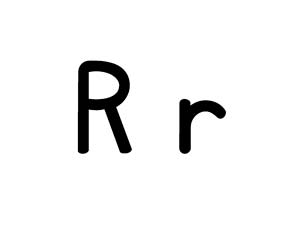 [Display letter R card.]
[Display letter R card.]
The word “relaxed” begins with this letter. What is the name of this letter?
Letter R says /r/, just like in the word “relaxed.” /r/, /r/, relaxed. Let’s together say /r/, /r/, relaxed.
Who would like to tell us another word that begins with the letter R?
Now let’s read a book!
[See Week 3, Day 1 of Language/Literacy for a description and examples of how to approach today’s book reading. Key aspects are summarized below:
Number knowledge
Children will individually demonstrate their knowledge of written numerals.


Review:
Be Prepared: This is an individual progress assessment of children’s knowledge of written numerals. Criteria for determining each child’s performance are described at the end of the activity plan. Begin the one-to-one assessment with 4–5 children today and continue assessments with 4–5 children each day this week. Invite each child to join you at a table in an area of the room with few or no distractions. The brief assessment session should occur when children are not engaged in a small or large group activity.
[Place stack of numeral cards on table, face up, facing the child.]
Today we will practice counting. We will use our number cards.
I am going to put a group of blocks in front of us. We can count them together. Then I want you to find the number card in your stack that matches the number of blocks we counted.
[Place seven blocks in front of the child. Encourage child to point to each block as you count together.]
We have seven blocks. Now please try to find the number card that means the same as this many blocks.
[Record child’s response on the provided form. Thank child for his/her effort. Do not comment on accuracy of responses.]
Now let’s count some more blocks together.
[Place three blocks in front of child. Encourage the child to point to each block as you count together.]
We have three blocks. Please try to find the number card that means this many blocks.
[Record child’s response on the provided form. Thank child for his/her effort. Do not comment on accuracy of responses.]
You’re working so hard! Let’s count one more group of blocks together.
[Place 10 blocks in front of you. Encourage the child to point to each block as you count together.]
We have 10 blocks. Try to find the number card that means this many.
We counted some blocks together, and then you found the numbers that tell us how many. It is fun to count with you!
Determine the child’s understanding of written numerals. Record your designation for each child on the provided form. Options are as follows:
Child correctly identifies the written numeral for each of the three quantities that are presented.
Child correctly identifies the written numeral for one or two of the quantities that are presented.
Child not does correctly identify the written numeral for any of the quantities that are presented.
Reinforce
The following activities are designed to support children who demonstrate knowledge of numeral names and their quantities (Assessment = Got It) and children who are developing an understanding of these skills (Assessment = Getting It). Some of the follow-up activities also may be appropriate for children who do not yet demonstrate knowledge of written numerals (Assessment = Not Yet) if support is provided.
Reintroduce
The following activities are designed for children who do not yet demonstrate evidence of knowing written numerals (Assessment = Not Yet).
Children in our classroom are learning to connect quantities to written numbers. This important skill helps children learn more advanced math concepts. I recently assessed Antonio’s understanding of written numbers. Antonio correctly identified the numbers 3, 7, and 10 without assistance. We are offering him learning opportunities to reinforce his knowledge of written numbers.
Children in our classroom are learning to connect quantities to written numbers. This important skill helps children learn more advanced math concepts. We recently assessed Lydia’s understanding of written numbers. Lydia identified the number 3 when we counted three blocks together, but she struggled in identifying numbers 7 and 10. We are offering follow-up learning support to review these numbers and to reinforce her knowledge of numbers she has learned.
Children in our classroom are learning to connect quantities to written numbers. This important skill helps children learn more advanced math concepts. We recently assessed Patrick’s knowledge of written numbers. Patrick did not seem ready to identify the written numbers that we worked with (3, 7, and 10). I am offering follow-up opportunities to reintroduce Patrick to these numbers and will assess his progress after he has more time to learn them.
Number knowledge
Children will determine the correct order of numerals 1–10 by identifying the number that is one more than a given number.


Review:

Be Prepared: Children place large numeral cards in order in this activity. Determine a location for children to put 10 cards in one line that will be visible to all children during the entire activity. If you opt for the floor, make sure no child’s view of the line of numeral cards is obstructed and that it is easy for children to place their card in the line. Display a number list for children to use as a reference.
[Display several large numeral cards.]
Let’s find out if we can put 10 different number cards in the right order.
I am going to hand out number cards to 10 people. Each person will get a different number. We will put our numbers in order from 1–10. Then we will do this again with 10 other people so everyone gets a turn.
[Hand out one large numeral card to each of 10 children as they remain sitting. Ask each child to name the numeral.]
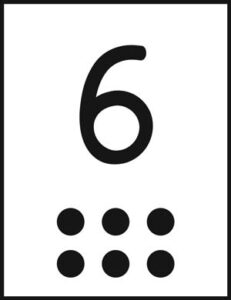
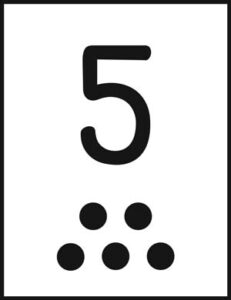 Let’s start with the number five. If you have the number five, please place it (location name).
Let’s start with the number five. If you have the number five, please place it (location name).
Now if you have the number that is one more than five, please place your card next to the number five.
Who has the number that is one more than five?
It’s the number six! A number that is one more than another number is always the number after that number.
[Encourage children to look at the number list for help, if necessary.]

[Continue this process for the following numerals:
Let’s count our numbers to see what we are missing. 1, 2, 3. . . . What number is one more than number three? It will be the number after number three.
We need number four, please!
Let’s try counting again. 1, 2, 3, 4, 5, 6, 7, 8. . . . What number is one more than eight?
It’s number nine! Number nine is one more than eight. Number nine, please place your card after number eight. Let’s count again. 1, 2, 3, 4, 5, 6, 7, 8, 9. . . . What is our last number? Our last number is one more than nine.
It’s number 10! Does number 10 come after number nine? Yes it does! Number 10, please place your card after number nine.
Let’s count our numbers one more time to be sure we have them all in the correct order. 1, 2, 3, 4, 5, 6, 7, 8, 9, 10! We did a great job putting all of our numbers in the correct order!

[Repeat the activity with remaining children. If more than 10 children remain, form several pairs of children who work as a team in identifying and contributing their numeral.]
Today we put our numbers in order by figuring out the number that was one more than another number.
Extra support
Enrichment
Provide a set of *small numeral cards 1–10. Invite children to mix up the cards and then put them in order. Provide a *number list for children to use as a reference.
*Printables provided
Write a series of larger numerals greater than 10 on index cards, and then mix them up. Encourage school-age children to practice putting the larger numerals in order.
Executive function
Children will understand how to focus on facial expressions and body movements of others.


Review:
Be Prepared: If time permits, offer the “Silly Faces Song” from Week 21, Day 2 as a second activity. If the game described below is too challenging for a majority of children, stop at an appropriate place and offer the “Silly Faces Song” from Week 21, Day 2. The game for today may be less challenging when offered again at a later point.
Today we are going to play a game we’ve played before called Mirror, Mirror. During this game, we will pretend we are looking in a mirror. Remember, when we pretend, we make believe we are a different person or we make believe a toy we are playing with is something different. We will pretend this craft stick is a mirror.
I will go first to remind you how the game works.
[Stand face to face with another adult.]
When I hold up my craft stick and look at (adult helper), I am going to pretend I am looking in a mirror. When I pretend to look in the mirror, I will pretend (adult helper) is what I see when I look in the mirror. Whenever I do something, (adult helper) will copy me by doing the same thing!
[Demonstrate by making silly faces or moving your body. Each time you move, the other adult is to move in the same way.]
Now we are all going to play. We will each have a partner for this game. As we play the game with our partner, we will take turns holding the craft stick and pretending to look in the mirror. After the person who is pretending to look in the mirror does several things, we will switch and the other person will hold the craft stick and pretend to look in the mirror.
[Observe as children play Mirror, Mirror. Encourage children to copy the other person’s movements as they pretend to look in the mirror. Invite children to switch roles after a few minutes.]
Today we pretended to look in a mirror during the Mirror, Mirror game. What would happen if we didn’t pay close attention to our partner? (we wouldn’t know what to do)
Extra support
Enrichment
Encourage children to take turns playing Mirror, Mirror. Provide a craft stick as a prop.
Play Mirror, Mirror while outside. Encourage children to mimic each other while playing on the swings or playing with a ball.
Knowledge of life cycles
Children will understand basic characteristics of the first stage of a butterfly’s life cycle. Children will also understand that a butterfly changes from one thing to a completely different thing as it grows (metamorphosis).


Review:
We are learning a lot about how living things grow and change over time. Remember, we call this a life cycle.
Some animals start life inside their mother. Other types of animals start life in an egg.
Many animals look like their parents when they are born. A dog is one of the animals that looks like its parent when it is born.
[Display photo of puppies and mother dog. Point to the puppies and the mother dog as you describe each.]
We looked at this picture of puppies and their mother several weeks ago. The puppies are smaller than their mother, but the puppies’ other characteristics are like their mother’s characteristics. Puppies have fur, a tail, and four legs, just like their mother.
Some animals do not look like their parent when they are born.
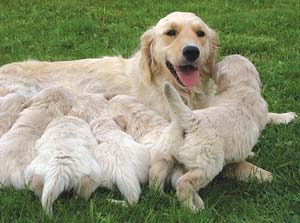
What animal did we learn about last week that does not look like its parent when it is born? (frog)
[Display pictures of tadpoles and an adult frog. Point to tadpoles and the adult frog as you describe each.]
Remember, a frog begins its life inside an egg. But a frog does not hatch from the egg.
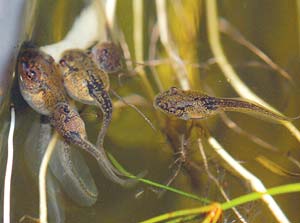
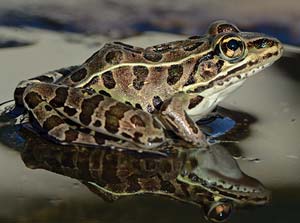
What hatches from a frog egg? (a tadpole)
A tadpole looks very different from an adult frog. It goes through a metamorphosis. We know that metamorphosis means something changes from one thing to a completely different thing. Let’s together say the word metamorphosis: met-a-mor-pho-sis.
This week we are going to learn about the life cycle of another animal that goes through a metamorphosis.
[Display picture of a butterfly.]
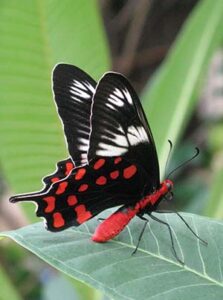
Raise your hand if you’ve ever seen a butterfly!
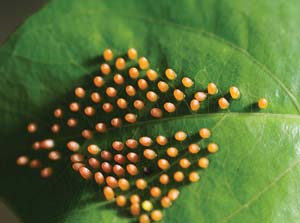 [Display picture of butterfly eggs alongside picture of butterfly.]
[Display picture of butterfly eggs alongside picture of butterfly.]
The life of a butterfly begins in an egg. Here is a picture of butterfly eggs. The eggs are laid on a leaf by an adult butterfly.
A baby butterfly does not hatch from a butterfly egg. Something else comes out of the butterfly egg.
Today we are going to think about what might hatch from a butterfly egg. We will draw a picture of what we think comes out of a butterfly egg in our science journals. Tomorrow we will find out what hatches from a butterfly egg. Remember, a baby butterfly does not hatch from a butterfly egg.
[Pass out science journals and drawing tools. Encourage children to draw what they think may hatch from a butterfly egg.
As children draw, ask them to describe their picture. (shape, color, etc.) Label the picture with the characteristics the children mention. Put “What Hatches Guess” at top of drawing.]
Today we learned that a butterfly goes through a metamorphosis. We know that frogs also go through a metamorphosis. A butterfly begins its life in an egg. But a baby butterfly does not hatch from the egg. We drew pictures in our science journals about what may hatch from a butterfly egg.
Extra support
Enrichment
Provide insect headbands (Week 10) and butterfly wings. The wings can be made from poster board or a scarf and attached with clothespins. Encourage children to pretend to be butterflies.
Visit a park or area that has flowers. Invite children to look for butterflies.